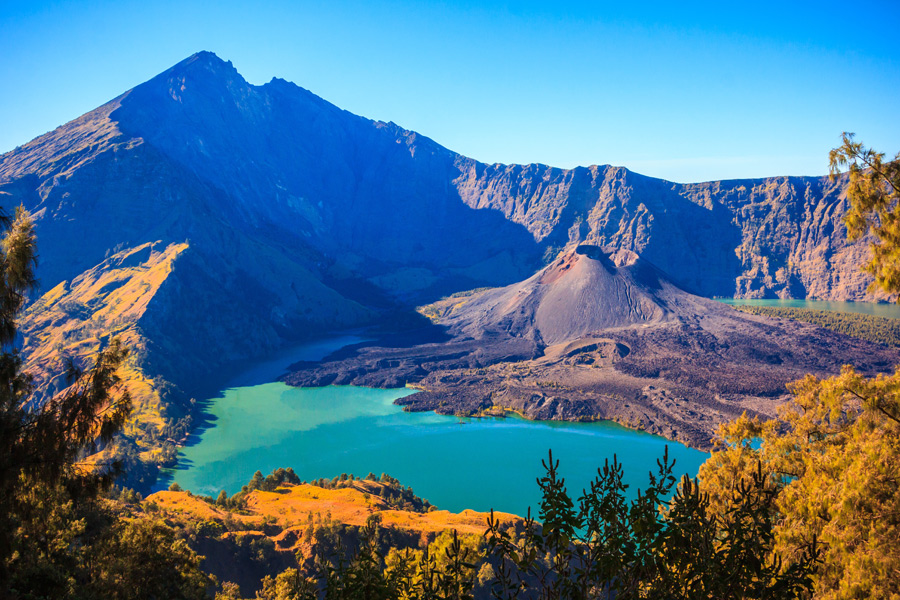[fshow photosetid=72157661333508943]
Roof tops bars and restaurants are all the rave in Southeast Asia’s big and bustling cities. But why not leave the bright city lights behind and get a whole different top view? Here are some of the best peaks in Southeast Asia, chosen for their natural beauty, challenging routes and unbeatable, rewarding views.
Mount Kinabalu, Malaysia
Standing at 4,095 metres above sea level, Mount Kinabalu on Malaysian Borneo is Southeast Asia’s tallest mountain. This is the place to be if you are into wild life and eco diversity; the island of Borneo is one of the most biologically diverse places on earth with Mount Kinabalu alone being home to an estimated 5,000 to 6,000 plant species. That is more than all of Europe and North America combined.
Some of the more famous plant and animal species to be found on Mount Kinabalu include the orangutan and the gigantic rafflesia flower, the latter of which is famous for its size (some species of the plant reach up to one metre in diameter) and its very peculiar smell, which can best be described as rotten flesh. The flower has no particular blooming season so you can’t plan your trip around it but you won’t be in doubt if a flower is blooming – you will smell it a mile away!
The trek up the mountain can be done in one day, however most people do it over two days, leaving plenty of time for rest and to enjoy the trek. There is a small lodge at around 3,200 metres where you can rest for the night, then rise around 2am in order to get to the peak for sun rise. If you’re fast enough, that is.
Doi Inthanon, Thailand
Located in Chiang Mai province in the north of Thailand, Doi Inthanon is the country’s highest mountain at 2,565 metres. The mountain is part of a maintain range that covers large parts of northern Thailand and given the already high elevations, the height of Doi Inthanon is not as pronounced as some of Southeast Asia’s other peaks. In 1954 the forests around Doi Inthanon were conserved in the Doi Inthanon National Park, which is popular with tourists due to the natural beauty and a very varied climate. If the sunny beaches and tropical climate of some of Thailand’s other prominent tourist destinations is a bit much for you, this is where you want to be – temperatures in Doi Inthanon National Park average between 10 and 12 degrees Celsius.
Several tour operators arrange treks and excursions into the national park but the park is also open to the public and doing it alone allows for plenty of freedom to make your own itinerary. One of the best ways to get around is by renting a motor bike and take in the beautiful scenery from the road. If you are more into dirt biking, a few tour operators will also take you into the forest for an adrenaline fuelled adventure. Along the way you will see many different bird and plant species and you might even be lucky to see bigger animals such as deer or monkeys.
Mount Rinjani, Indonesia
Walk on an active volcano on the island of Lombok in Indonesia. Mount Rinjani is only the second highest volcano in Indonesia but no where will you get views like these. Trekkers come to the summit from one of two routes, the northern one, which is closer to the resort area, and the eastern route, which is closer to the summit. In the past, there have been fatal accidents on the mountain so doing it alone is not an option. Hiring a certified guide is mandatory but also all the better because you will be able to learn about the flora and fauna along the way.
Several tour operators organise treks on Mount Rinjani with most taking three to four days, depending on the route and the experience level of the people on the trek. Virtually all itineraries will take you along the rim from where you will have stunning views of the azure blue Segara Anak lake.
Mount Fansipan, Vietnam
Vietnam’s highest mountain goes by the name of Mount Fansipan and despite the amusing name, trekking to the summit is no laughing matter. Nicknamed “The Roof of Indochina”, Mount Fansipan is a steep mountain only recommended for those in excellent shape and some previous experience with high, steep mountains. Although the route is only 9 kilometres from the starting point in Sapa town, the terrain is rugged and difficult to pass and it will take most people three days to cover. But once you’ve reached the summit at 3,143 metres and take in the sweeping views, it will all be worth it however.
Along the way to the summit you will pass Tram Ton, Vietnam’s highest pass at 2,100 metres above sea level and many tour operators will also include a stop at the Silver Waterfall, so named for its white silvery colour.
Tips:
- For the higher mountains such as Rinjani, Fansipan and Kinabalu it is highly recommended, oftentimes obligatory to hire a guide or join a tour. Not only will you be safe during the ascent, you will also get to know much more about the places you are visiting.
- Always check with your guide or tour operator what is required for the trip. These peaks are all relatively tall and temperatures at the summit can sometimes be below zero degrees Celsius with strong winds. Make sure you come prepared.
- Remember these are natural attractions and part of the attraction is that they remain, well, natural. Be careful not to drop any rubbish and don’t leave candy wrappers or food wrapping behind. Always take your trash with you.

